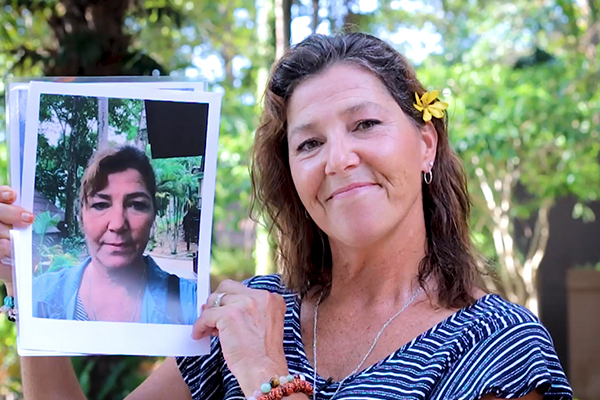 A parent’s worst nightmare came true for Rod Bridge, of Perth, Australia, when his son Preston died in a drug-related accident. In this particular case, the drug had been sold as LSD when in fact it was a counterfeit psychedelic called NBOM-e. The high-school student was killed in a fall from a hotel balcony while under the influence.
A parent’s worst nightmare came true for Rod Bridge, of Perth, Australia, when his son Preston died in a drug-related accident. In this particular case, the drug had been sold as LSD when in fact it was a counterfeit psychedelic called NBOM-e. The high-school student was killed in a fall from a hotel balcony while under the influence.
The substance, originally a research chemical, has been duplicated by underground chemists. It’s hard enough to enforce existing drug laws; authorities around the world are having difficulty stemming the tide of new drugs that evade being listed as illegal.
From a parent’s perspective, the fact of the drug world being as open and available as a candy store (Preston Bridge bought his alleged LSD online via “the Silk Road” for two dollars) is frightening. Parents are cautioned to watch for signs that may indicate experimentation with drugs, but adolescent behavior can have so many challenging aspects—rebellion, secrecy, recklessness, etc.—that it’s difficult to discern what is normal behavior and what might be incipient teenage drug abuse.
Until it becomes not so difficult. A young person’s drug problem can be chalked off to “typical teen behavior” for only so long before reality sets in—reality that has to be acknowledged, understood, coped with, and responded to.
The initially most agonizing thing for parents of drug-abusing children is that the parents will know something is going on, but the child will deny it. The parents, in the early stage, want so badly to believe that this problem hasn’t intruded into their lives that they will deny what common sense tells them. This is a setup for eventual disappointment, resentment, and alienation for the parents (the child is already experiencing alienation and resentment).
Here are a few signs that teenage drug abuse may be occurring:
- School performance drops suddenly
- Change of friends
- Sleep patterns change (can’t get up in morning, sleeps in afternoon, or—conversely—is wide awake for inappropriately long times)
- Deceptive and furtive behavior, dishonesty
- Argumentative or sullen and withdrawn
- Loses interest in formerly loved sports or hobbies
- Sudden weight loss and/or change of appearance
As with a physical illness, parents will—if the above signs are present—need to enter into an entirely new world of awareness, education, and coping strategies. There will be conflicting advice. There will be internal conflicts between the parents, and the drug-abusing teen will exploit these conflicts.
Resources are available for parents entering this new world (or already immersed in it). Al-Anon Family Groups has meetings and valuable printed material.
If you, or someone you care about, needs help for a drug or alcohol addiction,
contact us at 1-888-457-3518 US, 0-808-120-3633 UK or 1-800-990-523 AU.
We’re here to help you take that first important step.
 The common name for nitrous oxide is “laughing gas.” Often used by dentists to reduce anxiety, it has been the subject of spoofs on stage and television. It also has been used to ease the pain of childbirth. The very name makes it sound like fun: take a whiff, kick back, start a giggle fit, and enjoy. That oversimplification belies the fact that nitrous oxide abuse is on the rise internationally. Illegal use of the
The common name for nitrous oxide is “laughing gas.” Often used by dentists to reduce anxiety, it has been the subject of spoofs on stage and television. It also has been used to ease the pain of childbirth. The very name makes it sound like fun: take a whiff, kick back, start a giggle fit, and enjoy. That oversimplification belies the fact that nitrous oxide abuse is on the rise internationally. Illegal use of the  On June 19, the White House held a summit conference on Opioids, hosted by Office of National Drug Control Policy Acting Director Michael Botticelli. Calling the opioid problem in America an epidemic, Mr. Botticelli—himself a recovering alcoholic—introduced Attorney General Eric Holderer and Vermont Governor Peter Shumlin, who discussed possibilities for new ways to
On June 19, the White House held a summit conference on Opioids, hosted by Office of National Drug Control Policy Acting Director Michael Botticelli. Calling the opioid problem in America an epidemic, Mr. Botticelli—himself a recovering alcoholic—introduced Attorney General Eric Holderer and Vermont Governor Peter Shumlin, who discussed possibilities for new ways to  Earlier in the month we had an opportunity to join the ASEAN Conference 2014: Addiction Treatment: Future Challenges and Opportunities.
Earlier in the month we had an opportunity to join the ASEAN Conference 2014: Addiction Treatment: Future Challenges and Opportunities. 1. Improve the academic cooperation in developing addiction treatment and rehabilitation system among ASEAN countries.
1. Improve the academic cooperation in developing addiction treatment and rehabilitation system among ASEAN countries.







